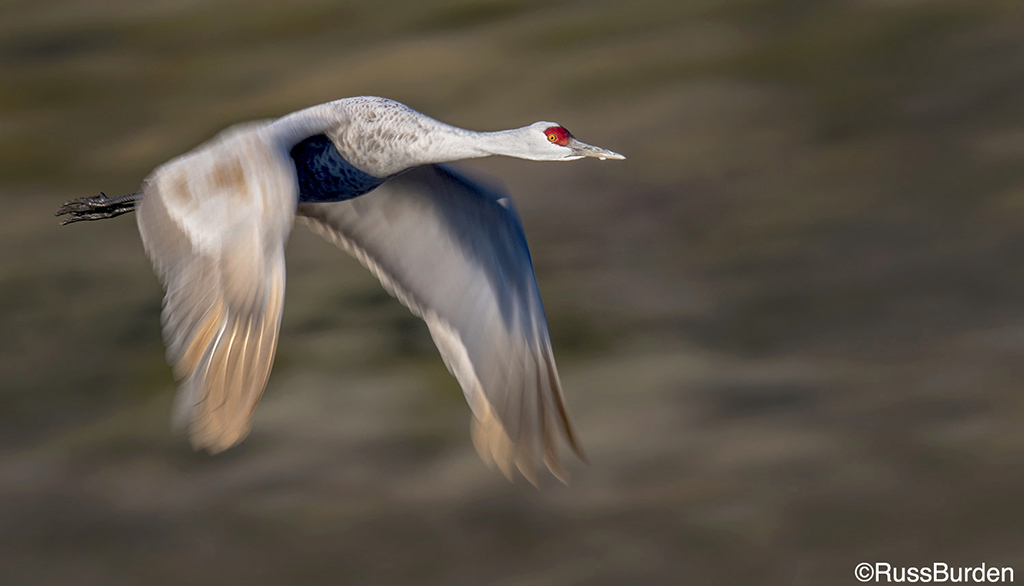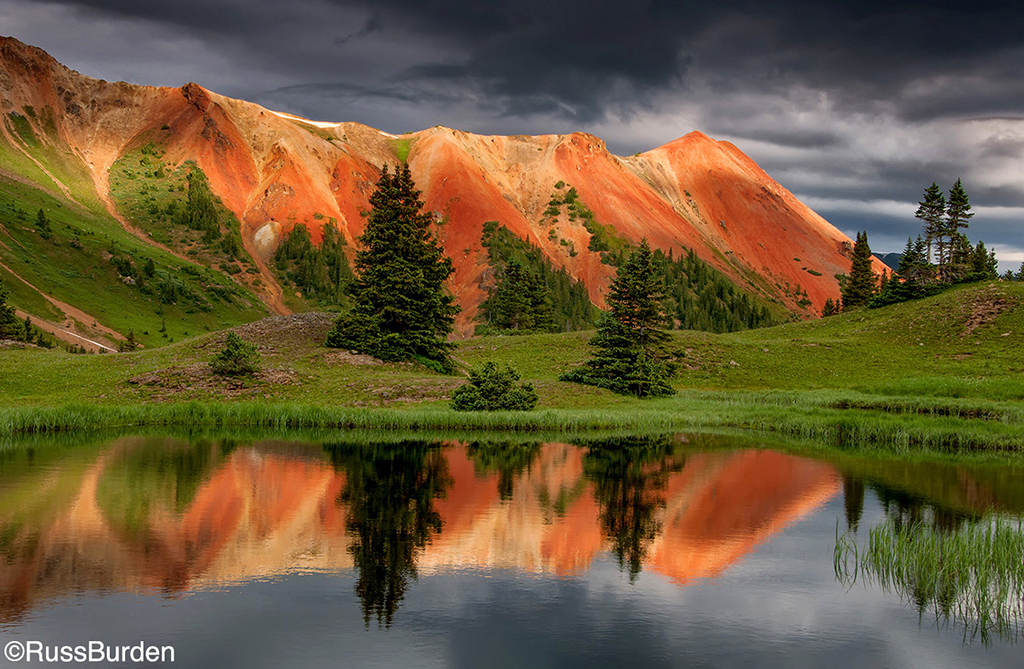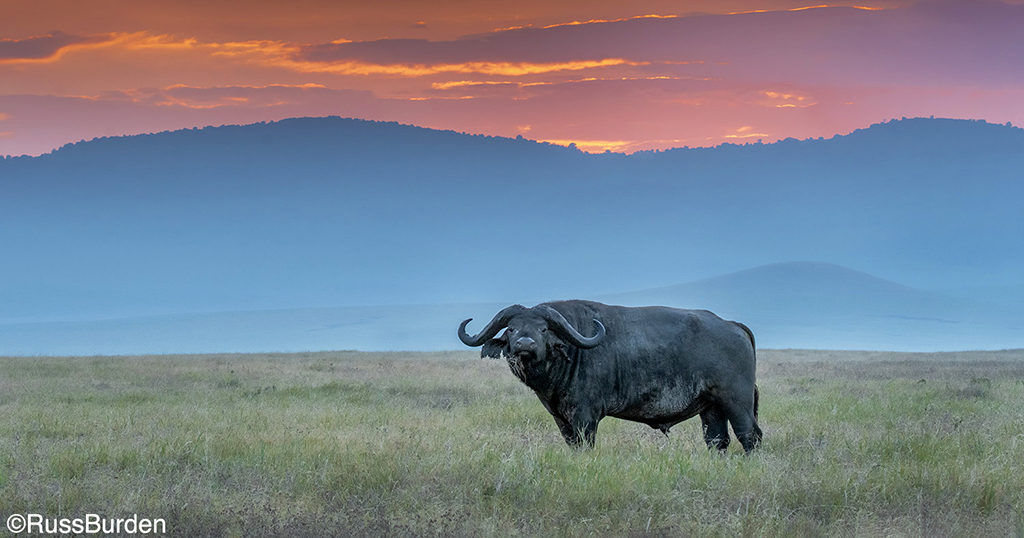Advertisement
Advertisement
Read Next

10 Action In Nature Quick Tips
As you know, nature photography isn’t...
Critically Sharp Captures
To obtain excellent-quality, tack-sharp...
Get Drenched In A Downpour Of Pixels

Get Drenched In A Downpour Of Pixels
Over 70 percent of the Earth’s...
The Amount Of Light Dictates The Strategy
Thick gray clouds, dawn, interiors,...Advertisement


Using Selective Focus
Raindrops on Orchid, Lava Tree State Park, Hawaii. I stacked three extension tubes on my macro lens to get as close as possible to this raindrop-festooned orchid and smooth a busy background. Because the focus point for the reflection is different from the focus point for the reflected subject, I stopped down to ƒ/16 to increase my depth of field. Focal Length: 100mm (macro) with 68mm extension tube; Exposure: 1/50 sec., ƒ/16, ISO 800
Attempting to convey our three-dimensional world in a two-dimensional medium creates both challenges and opportunities for photographers. The challenge of capturing an image that differs from the world we see is compensated by the opportunity to reveal it in unique and exciting ways.
A particularly effective method for handling the depth that’s missing from a photograph is to use selective focus creatively, restricting depth of field to create focus blur that emphasizes or disguises specific elements in the frame. Background focus blur is a valued and frequently applied technique in many styles of photography—portrait, wedding and product photographers, to name a few, use it to great effect—but the benefits are often overlooked by landscape photographers who zealously strive for front-to-back sharpness.
Executed properly, creative selective focus can:
• Guide your viewer’s eye to a specific subject
• Enhance the primary subject with a complementary background
• Smooth or eliminate a distracting background
• Give a subject context (location, weather, time of day, season and so on) without competing
• Provide photo ops at any location
• Create an image nobody can duplicate
No Special Equipment Required
While there’s equipment that might make the job easier, creative selective focus doesn’t require special or expensive equipment—if you have a camera and lens, you have all the gear you need.
Lens Considerations
Because depth of field shrinks with focus distance and focal length, macro and telephoto lenses are great for limiting it. But any lens, at any focal length, when focused near its closest focus distance, can soften the background. For example, I have great fun filling my frame with a single flower or leaf by focusing a wide-angle lens just inches away, and while it’s difficult to blur a background beyond recognition with a wide-angle lens, you can soften it enough that the sharpness of your subject stands out boldly in contrast.
You can further reduce your depth of field, regardless of the lens (without breaking the bank), with an extension tube. Extension tubes are empty (no optics), relatively inexpensive cylinders that attach between your camera and lens, shortening the minimum focus distance by moving the lens farther from the sensor. With no optics, there’s no glass to compromise the quality of the image. The best extension tubes communicate with the camera, allowing you to meter and autofocus.
Another bonus is that extension tubes can be stacked—the more extension you add, the closer you can focus, and the shallower your depth of field. Of course, there’s no such thing as a free lunch in photography—the downside is that the amount of light reaching the sensor decreases with the amount of extension, and you can’t focus at infinity with an extension tube attached.
The Camera
There are camera considerations, as well. A DSLR viewfinder won’t display your scene’s depth by default. If you’re not using your DSLR’s widest aperture, you must use its depth-of-field preview button to see the depth as it will be recorded, but the darkened view can make it difficult to see.
One solution is your live-view screen, which will show you the scene as it will be photographed, but LCDs can be washed out and difficult to view in bright sunlight. While I used DSLRs for my creative selective focus images for years, and certainly valued the addition of live view, I’ve come to appreciate how well my mirrorless camera’s (electronic) viewfinder shows my image exactly as my camera will capture it, without being affected by ambient light.
Don’t Forget the Tripod
Let’s not overlook the importance of a solid tripod. In general, the thinner the area of sharpness in an image, the more essential it is to nail the focus point. Even if you’re shooting at shutter speeds fast enough to eliminate camera shake, the unavoidable micro-millimeter shifts possible while handholding can shift the focus point enough to make the difference between a brilliant success and an absolute failure.
Composing your scenes on a sturdy tripod also makes it easier to evaluate your most recent frame and make the refinements that can improve your image. Because many of my selective focus subjects are at or near the ground, I prefer a tripod without a center post.
Managing Depth of Field
Creative selective focus requires understanding the difference between your view of the world and your camera’s view, and a mastery of the composition, exposure and focus variables that allow you to manage those differences.
The anchor of a creative selective focus image is a tack-sharp subject. The subject’s background blur ranges from soft, but easily recognizable to impossible to distinguish color, lines or shapes. Where your image’s background blur falls on this continuum is your choice.
Your depth of field will be shallower and your background more blurred:
• the closer your focus point
• the longer your focal length
• the larger your aperture
Which and how many of these variables you employ are determined by your creative vision.
There’s more than one way to blur your background, and each approach renders the scene a little differently. Your lens choice, framing, subject distance, focus point and depth of field can vary greatly for any subject/background combination. For example, you could fill your frame with a poppy by moving very close with a wide-angle lens, or you could move back and use a telephoto to fill the frame with the same poppy. Even though the poppy occupies the same amount of the frame, the wide-angle version will have a much broader, more defined background than the telephoto version. Experiment—the more you play with options, the better you’ll recognize the possibilities next time.
Dogwood and Bridalveil Fall, Yosemite National Park. I drove around in a light rain all morning, looking for dogwood blooms to juxtapose against a soft-focus Yosemite icon, before finding this flower just across the Merced River from Bridalveil Fall. I had to climb onto a log to get high enough to align the flower and the fall. My focus point was so close that part of the flower touched my lens; focused that close, I stopped all the way down to ƒ/22 to get enough definition in the fall. Focal Length: 48mm with 20mm extension tube; Exposure: 1/15 sec., ƒ/22, ISO 100
Choosing the Foreground/Background Combination
Composing a creative selective focus image usually starts with finding a foreground subject on which to focus, then positioning your camera so your subject stands out against a complementary background. Of course, you can do this in reverse, too—if you see a background you think would look great blurred, find a foreground subject that would stand out against that background.
Stick to the Subject
As the anchor of your frame, it’s generally best if your subject possesses an inherent appeal that you can further emphasize with your composition. For example, a poppy probably (but not necessarily) will work better than a dandelion.
Poppies, Sierra Foothills. I identified my primary subject, the trio of foreground poppies, fairly quickly, then moved around quite a bit to get the background just right. Focal Length: 100mm (macro) with 32mm extension tube; Exposure: 1/125 sec., ƒ/4, ISO 400
I scan for a subject that I can isolate from its surroundings, something that stands out by virtue of its position, color or illumination. Often, I make a quality of an object my subject—not the entire poppy, but the curve of a petal; not the entire maple leaf, but its intricate network of veins. Backlight will enhance any translucent subject, creating the illusion that it’s illuminated from within.
Background Check
A strong foreground subject can appear even more striking when juxtaposed against a homogenous dark or complementary-colored background. On the other hand, when I want a background with soft, but distinct detail, I look for things like parallel tree trunks, splashes of sunlit leaves or flowers in an otherwise shaded forest, pinpoint jewels of daylight shining through the trees, flowers or leaves that blur to color and soft shapes, or sunlight sparkling on water. Most scenes offer an array of options.
When the background contains qualities possessing visual weight that might tug the eye—such as a splash of color or light—use that weight to balance or frame your subject, avoiding merging these background elements with your subject. Keep strong background elements away from the edges, where they might draw the eye out of the frame.
Another great background option is a recognizable landscape feature that reveals more about the scene—even when out of focus, nothing says Yosemite like a waterfall or the ocean like background surf. In popular locations like Yosemite, I often start with the background I want to blur and look for a strong subject to juxtapose with it.
What’s the Point?
Once you’ve identified your foreground/background combination, the next piece of the composition puzzle is selecting a focus point. Because the point of maximum sharpness is where your viewer’s eyes will land and linger, the focus point can make or break an image.
In one composition, you might need to choose between a focus point emphasizing a leaf’s serrated edge or its intricate vein pattern. Or you might need to decide between the pollen clinging to a poppy’s stamen or the sensual curve of the poppy’s petals. Whatever your choice, try shooting it both ways so you can decide later which version you prefer.
One Step at a Time
Virtually all of my creative selective focus images are achieved in incremental steps as I become familiar with my camera’s take on the scene. I start with a general concept that includes a subject and background. If I’m struggling to find something, I’ll pop my camera off the tripod, put it to my eye and move the view around the scene until something stops me.
Once I’ve identified a foreground/background combination, the camera goes back on the tripod and I start creating an image. I consider my initial composition a rough draft that gets refined in click-evaluate-refine-click cycles until I’m satisfied. Refinements can range from micro-adjustments of framing and focus to complete reorientation, repositioning or lens changes.
Your Camera’s Vision
The key to creative selective focus landscape photography is recognizing that your camera will record the scene differently than you see it. Choosing and composing an image that could differ significantly from the way you see it takes practice and patience. Even armed with those virtues, you might not appreciate the full potential of a scene until you start shooting it, but once you do, you might find it hard to stop.
Gary Hart is a Northern California-based professional photographer and writer who conducts photo workshops in Death Valley, the Eastern Sierra, Grand Canyon, Hawaii and Yosemite. Visit his website at garyhartphotography.com.